MENUMENU

The MicroLab® combines automation and artificial intelligence in an all-in-one oil analysis tool, making on-site oil analysis possible for any fleet. Simple to use – no special operator required Fast – results in less than 15 minutes Easy to read reports – color-coded alarms and maintenance actions MicroLab 40 is designed primarily for fleets operating equipment with hydraulic components or heavy equipment gears and transmissions. This would include off-road mining and construction vehicles as well as over-the-road equipment with hydraulics such as bucket trucks, fire engine ladder trucks or any type of lorry and HGV. The MicroLab 40 is also…
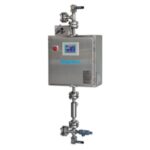
Description Specification Description RIGAKU Online Sulfur Analysis:Advanced X-ray Transmission (XRT) Sulfur Gauge—for Crude Oil, Marine Bunker Fuel and Blending OperationsRigaku’s NEX XT is the next generation process gauge for high-level sulfur measurement (0.02% to 6% S) of crude, bunker fuel, fuel oils, and other highly viscous hydrocarbons. On-Line Sulfur GaugeThis versatile, compact and robust X-ray Transmission (XRT) process gauge is specifically optimized for the sulfur analysis needs of refineries, pipelines, blending operations, bunkering terminals and other storage facilities. Applications for the NEX XT include bunker fuel blending to meet MARPOL Annex VI sulfur restrictions, interface detection of different grade fuels…
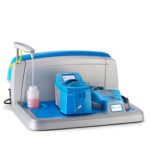
Oil analysis provides early indications of equipment wear mechanisms and identifies the root causes of corrosion. On-site oil analysis eliminates the wait associated with sending samples off-site and enables immediate decision making. The MiniLab 53 delivers comprehensive on-site oil analysis, providing immediate actionable results, saving time and reducing costs. The MiniLab 53 answers the questions: • Is it the right oil? • Is the oil clean? • Is it dry? • Is it fit for use? • …and most importantly – Is the machine in good condition? The MiniLab 53 seamlessly integrates with the on-board TruVu 360™ software module. Samples,…
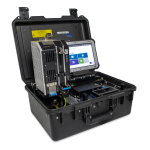
The Spectro Q5800 is a rugged, portable expeditionary fluid analysis system that gives operators in the field the ability to perform comprehensive, mobile lubricant sampling. The battery-powered device enables complete lubricant assessment for condition monitoring and rapid results that permit informed maintenance decisions. The Q5800 includes three major components: • A Filtration Particle Quantifier (FPQ) unit that provides particle counts as well as abnormal wear metal analysis using XRF technology.• A solvent-free kinematic viscometer at 40°C that measures lubricant kinematic viscosity.• An infrared spectrometer featuring an innovative flip-top cell which tests for TAN/TBN, water content, soot, oxidation and mixed up…

Introduction For almost 30 years, Spectro Scientific has specialised in the development of instruments for machine condition monitoring based on oil and fuel analysis. Spectro’s sole focus has been to design and market instruments optimised for one application, rather than general purpose instruments that can be used for a variety of applications. All SpectrOils are user-friendly and reliable; they are the workhorses of commercial and military oil analysis laboratories that require the rapid analysis of wear metals, contaminants and additives in lubricants. SpectrOils measure trace quantities of elements dissolved or suspended as fine particles in natural or synthetic petroleum-based products…
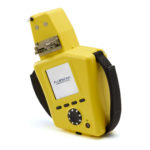
SpectroFluidscan Q1000 was made possible due to years of experience and extensive research and development based on the customer’s need to have an on-site lubricant analysis capability. FluidScan represents the state-of-the-art in infrared technology and can be used to quickly check the condition of lubricants such as hydraulic fluids, engine oils, turbine oils and gear oils for degradation and the presence of contaminants. The Spectro Fluidscan Q1000 is a handheld condition-based maintenance monitor that protects machinery by determining when a lubricant needs to be changed due to excessive contamination or degradation. Its detection capabilities can determine lubrication contamination, degradation and…
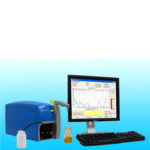
Application • Machine condition-based monitoring Description • particle counter • wear particle classifier • ferrous monitor The Spectro LNF Q200 series features LaserNetFines™, the world’s best particle counter technology. With an intuitive, configurable GUI and no calibration required, the Q200 series is fast, accurate and easy to use. Sample preparation is efficient with the LNF. Viscosities up to 320cSt can be processed without dilution due to the wide dynamic range. And unlike conventional light blockage particle counters, there are no flow control valves that need adjusting when testing different sample viscosities. The advanced design makes it much more than just…

Application • Machine condition based monitoring Description The SpectroT2FM Q500 Analytical Ferrography Laboratory is a complete analytical system for the separation and interpretation of wear and contaminant particles in used lubricant oils, hydraulic fluids, coolants and fuels. It consists of the T2FM Ferrogram maker, a bichromatic microscope, video camera and image capture software. The SpectroT2FM Q500 is fast because there is no delay time as sample is pumped through plastic tubing before reaching the ferrogram surface. The T2FM delivers the entire sample and all the particles contained therein onto the ferrogram surface. A crystal clear rinse is obtained without fail…

The devices are designed to determine kinematic viscosity in the field for applications where immediate results are essential for determining the health of critical equipment. SpectroVisc Q3000 viscometers use a patented split cell design that enables measurement of kinematic viscosity using only a few drops (60µL) of oil. Application: The SpectroVisc Q3000 series viscometers are portable, solvent-free, temperature-controlled kinematic viscometers, providing high-accuracy measurements for easy detection of viscosity variations caused by contamination, mix-up and oil degradation. The SpectroVisc Q3000 series includes two models: • SpectroVisc Q3000 portable viscometer 10-350 cSt @ 40° C • SpectroVisc Q3050 portable viscometer 1-700 cSt…

The Q6000 Fuel Dilution Meter (FDM) is a portable fuel dilution meter that can be used in the laboratory or in the field to provide rapid and accurate measurements of fuel contamination in engine oil. The Q6000 was designed with a patent-protected sampling method using an innovative ‘fang’ design. The sampling occurs using a headspace system with repeatability of <+5 percent RSD up to 15 percent fuel content. The headspace vapour sampling approach also eliminates the need to heat fuel-laden samples and does not require the use of solvents. Fuel dilution in lubrication oil can cause serious engine damage. For…

Parr Instrument Company offer laboratory scale pressure vessels without mechanical internal stirring. These autoclaves, (referred to as ‘general purpose vessels’), are provided in several convenient sizes and cover a wide temperature and pressure range (shown below) to allow the researcher’s specific application to be carried out. Examples of the uses of these vessels are: Simple organic chemistry pressurised reactions Many organic chemists use our general purpose vessels for carrying out hydrogenations where they heat and stir the vessel on a conventional stirrer hotplate. This is a low cost way of undertaking simple synthetic pressurised reactions while keeping safely as the…